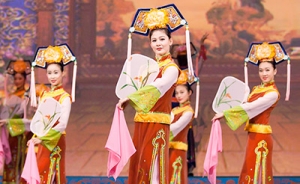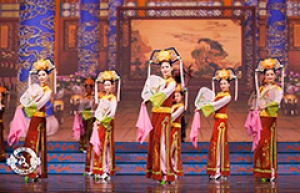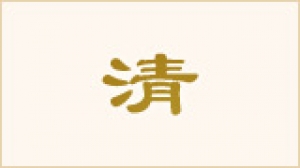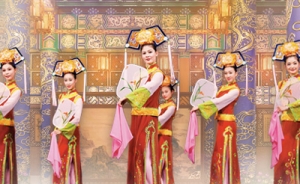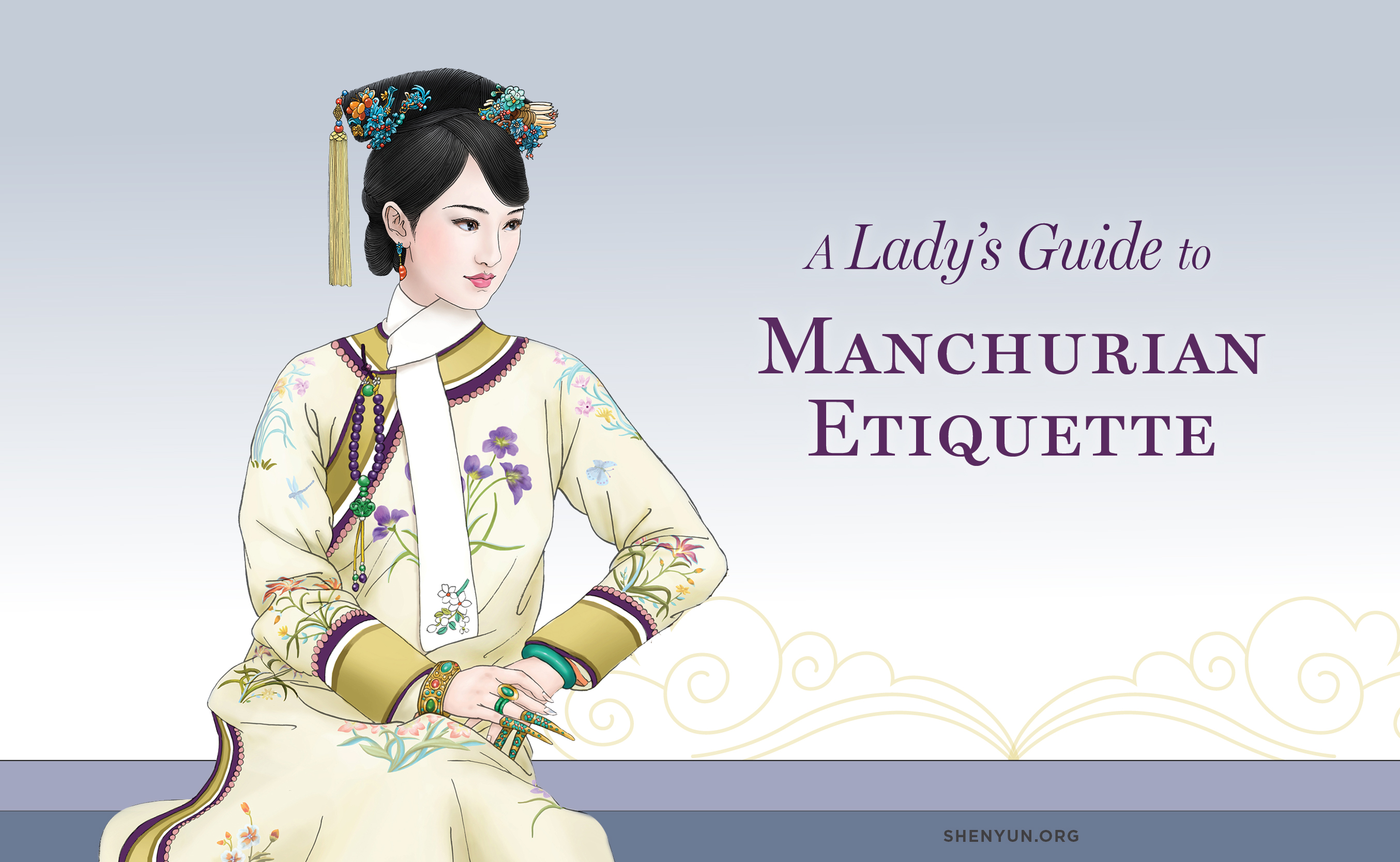
A Lady’s Guide to Manchurian Etiquette
You may recall the Shen Yun dance in which the ladies of the Manchurian court walk, spin, and leap in their signature elevated shoes. While these “flower pot” shoes are unique, they are far from the only distinguishing trait of the Manchurian ladies.
Be it attire or court etiquette, the ladies of the Manchurian Qing Dynasty (1644-1911) had their own habits and flair. So, just in case you find yourself transported back a few centuries to the Qing Dynasty, here are six things to keep an eye out for.
1. Earrings
The Qing Dynasty was ruled by the Manchurians, an ethnic group different from the majority Han Chinese. But if you suddenly took a quantum leap to the Forbidden City and needed to be able to tell if a lady is Manchurian or Han, just sneak a peek at her ears. Or, more specifically, check how many earrings she has on each ear.
Manchurian girls were given three ear piercings on each ear soon after they were born. During the Qing dynasty, this became a law. All Manchurian ladies were required to have three ear piercings on each earlobe. If you had three earrings on each ear, you were Manchurian.
Important tip: Don’t make it too obvious that you’re trying to see how many earrings a lady has. In China of yesteryear, a lady’s ears were considered very intimate.

2. Hair
Like most fashionable ladies of the time, Manchurian ladies would wear their hair up. Theirs was, however, coiled on top of their head. Eventually, this transformed into using a frame for them to wrap their long hair around and was a strictly Manchurian hairdo.
This “hair frame” was made of iron thread or bamboo strips and embroidered with birds and flowers. Ever try walking around with some books on your head? This was similar, except the hair frame also happened to be tied down.
Putting your hair up like this restricted movement of the neck and required the ladies to keep their body perfectly straight. So, not only did these fancy frames look good and keep hair up, they also helped with posture.
Sound like these hairpieces would get in the way of everyday work? Most women would wear these hair frames only on their wedding day. Nobles, on the other hand, who barely ever mopped the floor, did laundry, or ran high tech companies, would wear these nearly every day. Such were the princess-ladies, known as ge ge, depicted in Shen Yun’s Dance of the Manchurians.
3. Marriage
If you ever see a Manchurian groom shoot an arrow at his bride’s sedan chair, don’t worry (at least generally speaking). He’s not threatening her—he’s simply chasing away evil spirits. This is a traditional Manchurian marriage ritual. Customary betrothal gifts often included bows, arrows, and armor. This was very different from the normal Chinese betrothal gifts of silks and riches.
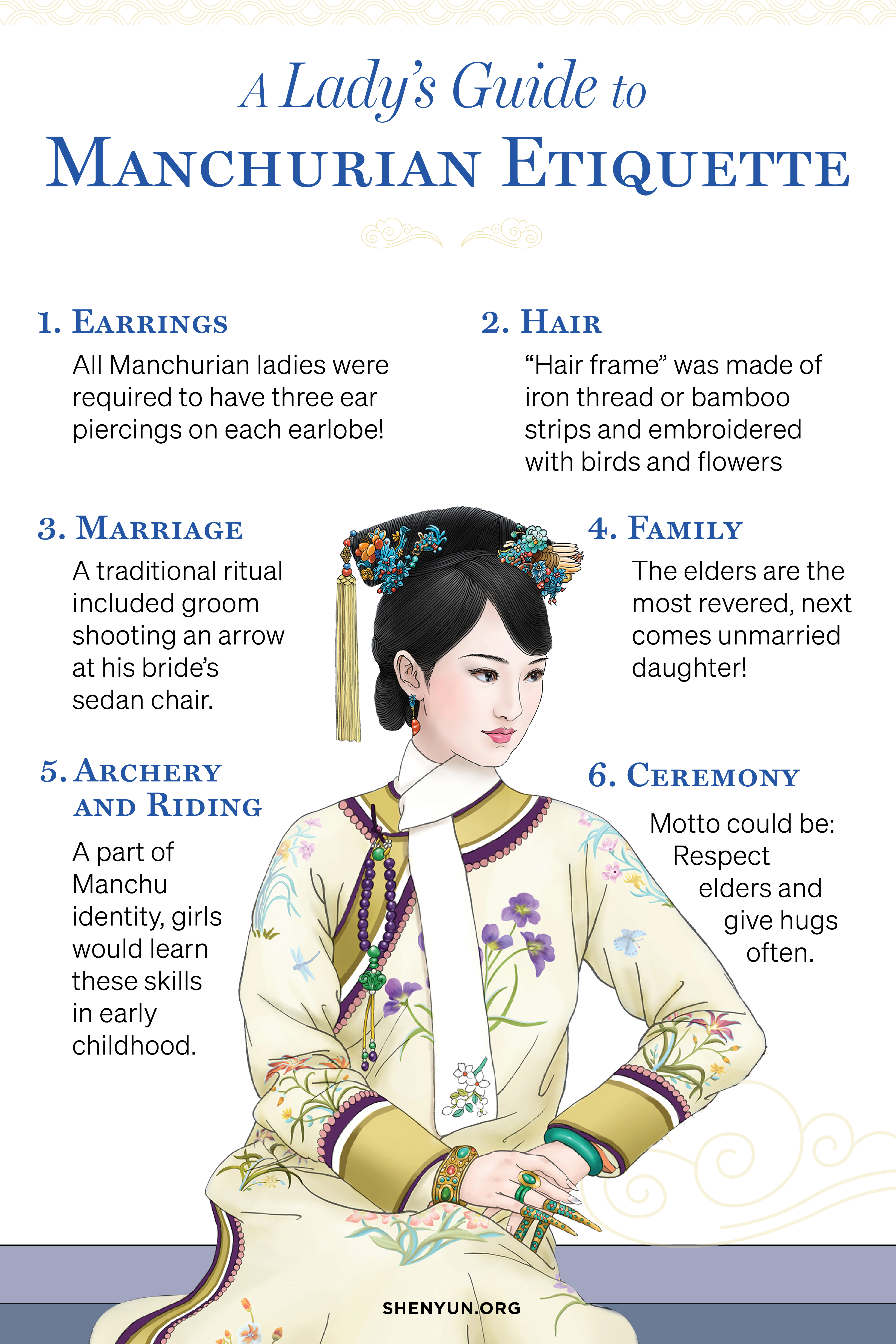
4. Archery and Riding
Archery and riding were an indispensable part of Manchu identity. If you watched Shen Yun’s 2021-22 production, then you saw a piece focusing on the predecessors of the Manchu, the Jurchen, who lived north of the Great Wall. That vigorous dance—Men of the Jurchen—demonstrated their prowess in archery and horsemanship through feats of strength, which translated well to the battlefield.
Even after the Manchurians entered the heart of China and left the grasslands behind, riding and archery were not left along with their homeland. Every Manchu child would learn riding and archery, princesses included.
According to books of the time, Manchurian ladies learned riding and archery—and they excelled at it. In various novels and stories of the time, proficiency in archery and riding was a very desirable skill of the perfect Manchurian girl.

5. Family
In the typical Manchurian family, the elders are the highest rank and most revered. But contrary to what one would expect, parents are not next in rank. The unmarried daughter of the family is right under the grandparents in rank.
If you’re an unmarried Manchurian girl, you don’t need to feed the animals or wash the dishes. You can just stroll about town without a chaperone. This was amazingly carefree—especially for the time period and when compared with Han restrictions.
Once the girl marries, though she’s expected to work as much as she can for the family she marries into. Only when she has a child will she be able to have people serve her instead of her serving the family from sun up to sun down.
6. Ceremony
Now that we’ve introduced a bit about the Manchurians, we know that they were fashion conscious and very athletic. But that’s not all—they were also very strict with etiquette and ceremony.
It all starts with respecting your elders. It didn’t matter if you were commoner or emperor, all Manchus were expected to get up in the morning bright and early to greet their elders and to wish them a good night in the evening.
Every three days, there would be a small ceremonial greeting of the elders, and a grand ceremonial greeting every five days. Surprisingly, the grand ceremonial form of greeting was a hug. Have you hugged your elders the past five days?
Among the Manchurians, you would hug close friends and family you hadn’t seen in a while, you would hug visitors, and you hug envoys from faraway lands. Of course, you had to hug correctly. Younger people would embrace their elders with their left hand on the lower back and the right hand on the middle of the other person’s back. Elders would return the hug by placing both hands on the middle of the younger person’s back.
So next time you’re in the seventeenth century, or a Shen Yun performance, look carefully at those dangling earrings, elaborate headdresses, and dainty flower pot steps with perfect posture. You may not see many hugs, but we can easily embrace the etiquette and dignified air of a bygone era.


